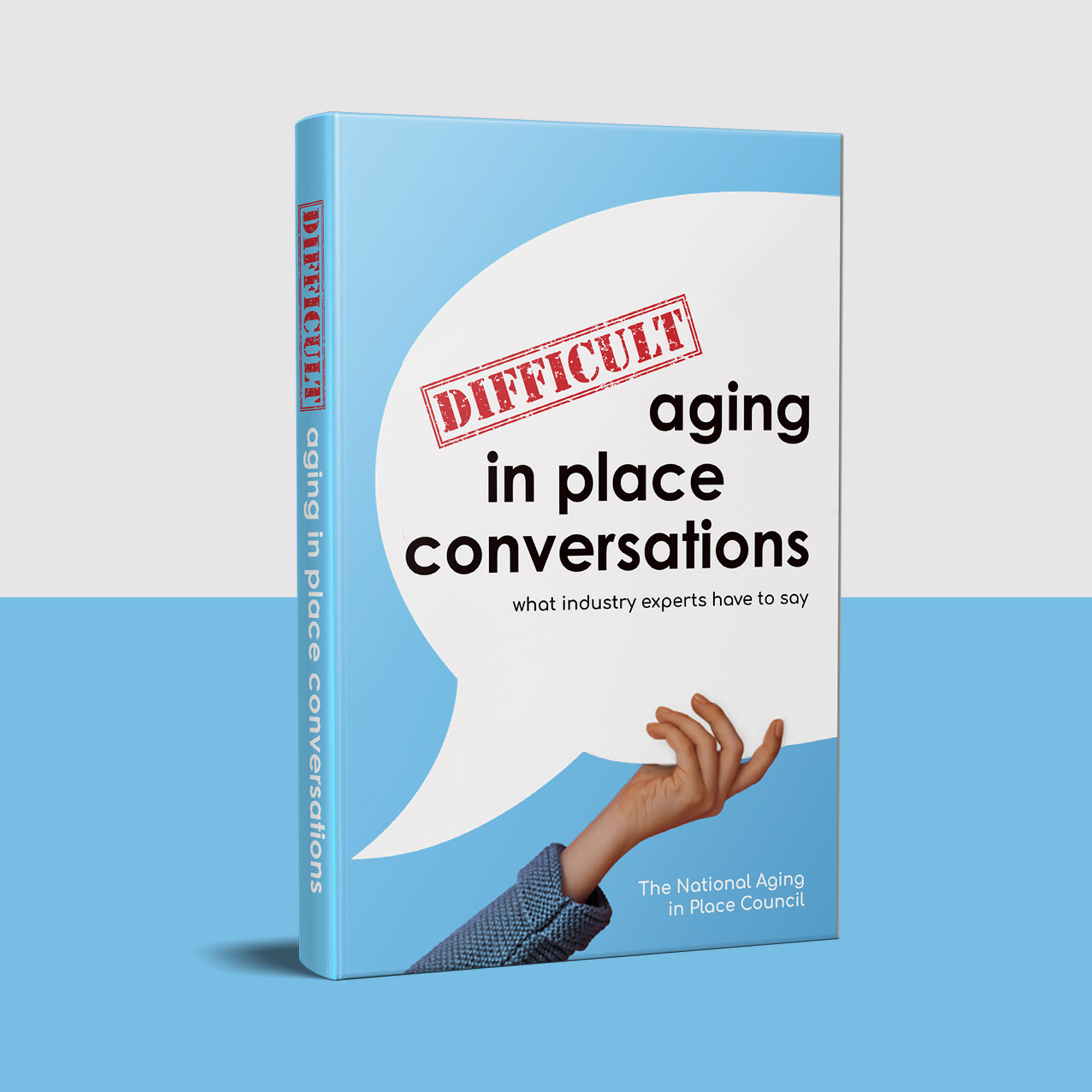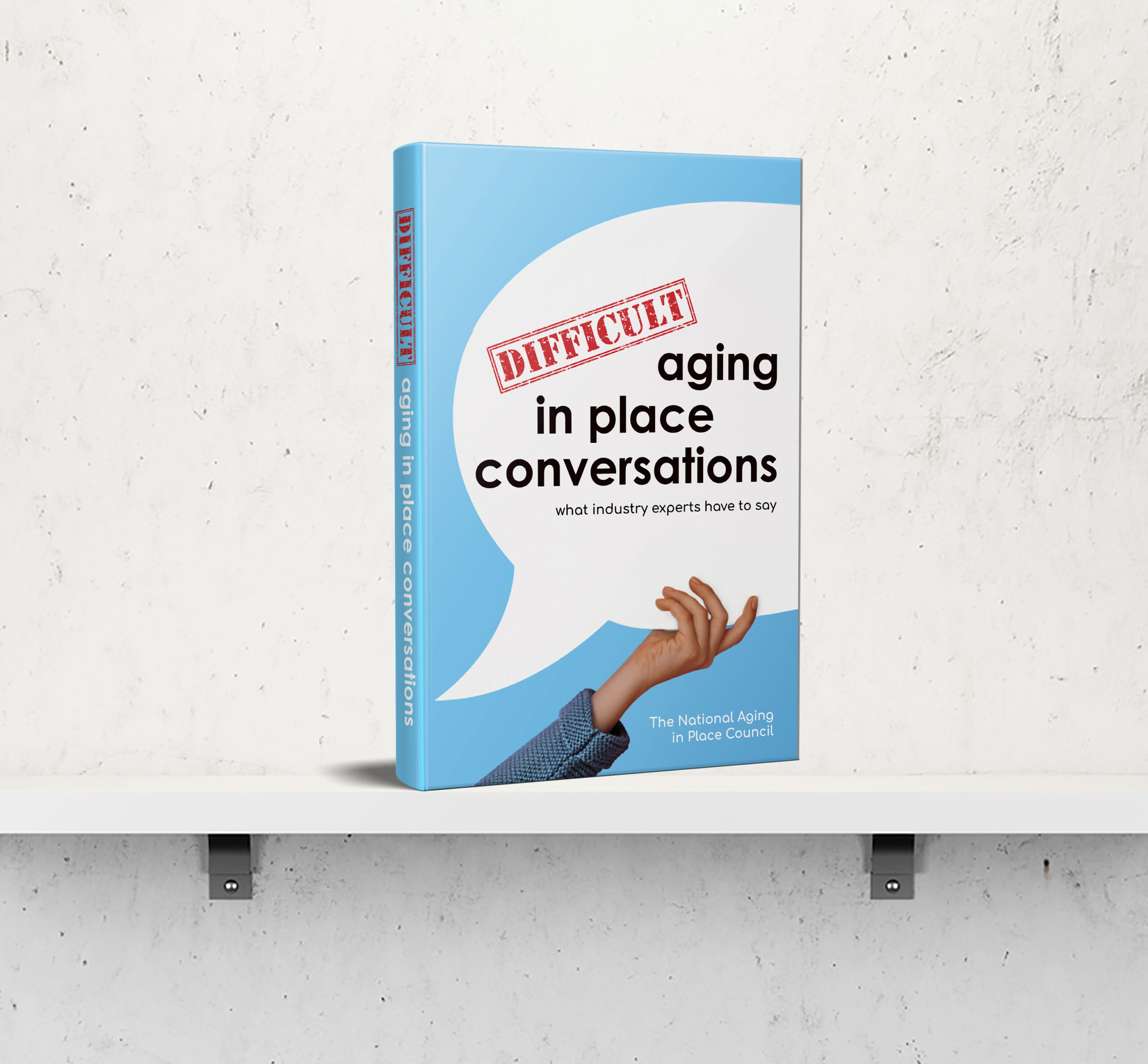Difficult Aging in Place Conversations
What Industry Experts Have to Say

About the Book
Industry experts share their wealth of knowledge and provide valuable discussion tips designed to equip and empower individuals and their families to navigate difficult conversations with confidence and compassion
Conversations about sensitive topics can be daunting to initiate, yet the repercussions of avoiding them can be profound. Are there conversations you have been putting off? Unsure of how to broach these subjects? Concerned about potential misunderstandings or resistance?
Difficult Aging in Place Conversations aims to encourage open and honest dialogue about the challenges associated with various aspects of aging.
Industry experts share their wealth of knowledge and provide valuable discussion tips designed to equip and empower individuals and their families to navigate difficult conversations with confidence and compassion.
Order Your Copy
Difficult Aging in Place Conversations
What Industry Experts Have to Say
Start The Conversation
The Next Chapter Awaits
Unlock insights on aging with Catherine L. Owens’ new book:
- Discover the true meaning behind “Aging in Place”.
- Understand the emotions tied to age-related discussions.
- Embrace proactive aging and thrive at any age.
A National Aging in Place Council Publication
Available on Amazon
#1 Best Selling in
Non-Formal Education
Kindle
Paperback
Excerpt From Chapter By Catherine L. Owens
Proactive Planning and Adaptation: The Keys to Successful Aging and Thriving vs Surviving
When you hear the term “Aging in Place”, what comes to mind? Although the meaning can vary for people, an overall accepted reference for the term “Aging in Place” is staying in our home through end of life.
If you were to search the term “Aging in Place”, you would find the following definition, or something very similar.
“Aging in Place” refers to the ability of an older person to live in their own home or community safely, independently, and comfortably as they age. It involves modifying the living environment and accessing necessary services to meet the changing needs of older adults. The goal of Aging in Place is to enable older adults to maintain their autonomy, dignity, and quality of life by providing the support they need to remain in their homes and communities for as long as possible.
This concept emphasizes the importance of proactive planning and adaptation to ensure older adults can continue to live fulfilling lives as they age.”
Staying in our home through the end of life is a natural and desirable goal, and for many, this mindset and approach is the only considered and acceptable option as we grow through our older years. Consistent with the definition above, as a society, health industry, and individuals, we often associate maintaining independence, dignity, and quality of life in our older years, with the term aging in place (staying in our homes through end of life).
Along with what we have come to define as aging in place are common feelings and emotions evoked when discussing the concept for both older adults and their loved ones. Feelings and emotions one may wish to avoid, or be unaware of, can hinder a person’s ability to approach and/or facilitate difficult conversations as age-related needs and concerns arise. Consider the following questions:
How do you or a loved one feel when hearing the term aging in place?
Do you feel resolute in the idea that maintaining autonomy, dignity, and quality of life is only accomplished by staying in your home through the end of life?
Are topics related to aging in place easy and comfortable for you to discuss or would you prefer to not think of or discuss such topics?
Approaching every stage of life with a mindset of proactive aging and wellness requires planning and adapting, especially at later stages of life. It may, at times, require uncomfortable and difficult conversations on topics we would rather avoid, but are critically important.
Having conversations, even difficult ones, about hopes and fears, what is important, potential concerns and necessary support, can help in recognizing where planning, adaptability, and proactive lifestyle choices may be needed. Putting in place what is needed allows for increased opportunity of living safely, independently, and comfortably with dignity, autonomy, and quality of life, and successfully aging well in any place.

National Aging in Place Council®
The National Aging in Place Council® is a nonprofit trade association and serves as a vital national senior support network, connecting service providers with older adults, their families, and caretakers. Through collaboration, education, and advocacy, the organization strives to collectively address the challenges that arise with aging, find effective solutions, and create environments where older adults can thrive in their homes and communities.


